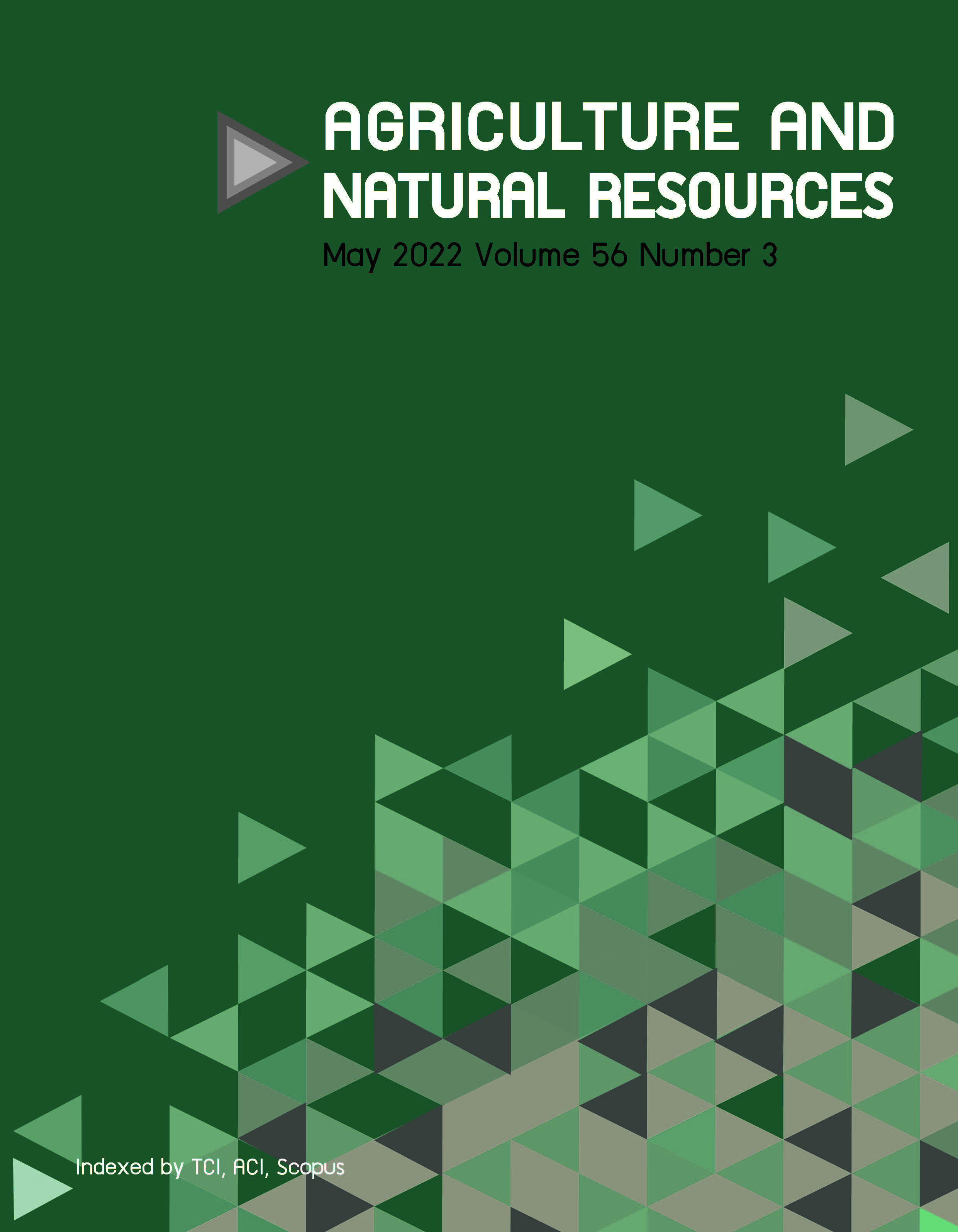Effect of extraction solvents on phenolic compounds and flavonoids from Pongame oiltree (Derris indica [Lamk.] Bennet) aerial parts and their growth inhibition of aquatic pathogenic bacteria
Keywords:
Antibacterial, Aquaculture, D. indica, Gallic acid, MangroveAbstract
Importance of the work: Various parts of Derris indica have been used in the Ayurvedic and Unani systems of medicine with antiinflammatory, antiplasmodial, antinociceptive, antihyperglycaemic, antilipid oxidative, antidiarrheal, antihyperammonemia and antioxidant properties, and for the treatment of liver disorders. However, there are no scientific reports regarding their use against aquatic pathogenic bacteria in the modern literature.
Objectives: To investigate the potential of phenolic compounds and flavonoids from D. indica against aquatic pathogenic bacteria.
Materials & Methods: The total phenolic and total flavonoid contents were analyzed of the aerial parts of D. indica extracted using hexane, ethyl acetate and methanol according to the polarity of solvents, respectively. The antibacterial activity levels of 15 extracts were evaluated against selected strains of bacteria using the hole-plate diffusion method and determination of the minimum inhibitory concentration (MIC) and minimum bactericidal concentration (MBC).
Results: Quantitative analysis showed that the ethyl acetate extract had high levels of phenolic compounds and flavonoids contents (0.428 ± 0.022 mg gallic acid equivalents/g crude extract and 2.251 ± 0.102 mg rutin/g crude extract, respectively). Antibacterial screening showed that the maximum zone of inhibition was with ethyl acetate extract against Streptococcus agalactiae (zone diameter = 18.06 mm). The lowest MIC and MBC values were obtained with hexane and ethyl acetate extracts of the flower against S. agalactiae and Aeromonas hydrophila (MIC and MBC both 0.048 mg/mL) that were significantly lower than those of oxolinic acid (MIC = 0.19 mg/mL and MBC = 3.12 mg/mL). Two-way analysis of variance confirmed the effect of the solvents used for extracting each part of D. indica (p < 0.001).
Main finding: D. indica could be a potential source of natural bioactive compounds to develop pharmaceutical products against bacterial pathogens in aquatic animals.
Downloads
Published
How to Cite
Issue
Section
License
Copyright (c) 2022 Kasetsart Universityonline 2452-316X print 2468-1458/Copyright © 2022. This is an open access article under the CC BY-NC-ND license (http://creativecommons.org/licenses/by-nc-nd/4.0/),
production and hosting by Kasetsart University of Research and Development Institute on behalf of Kasetsart University.







